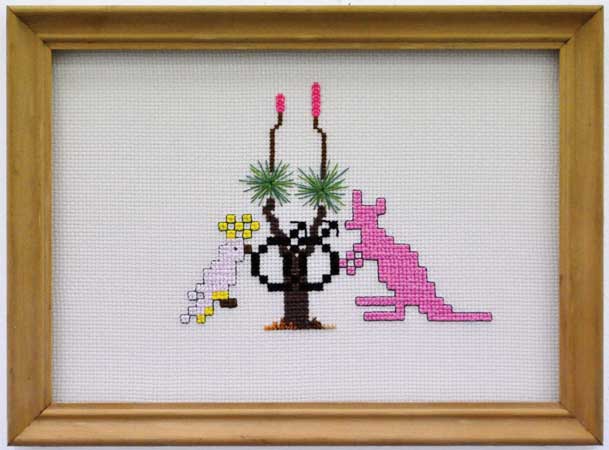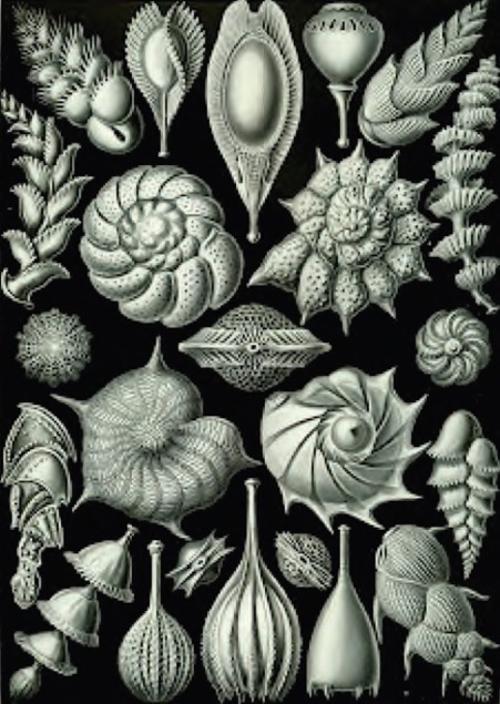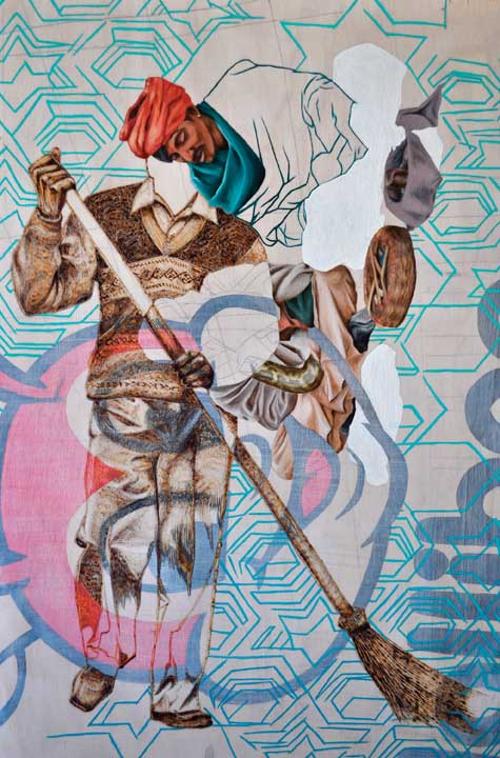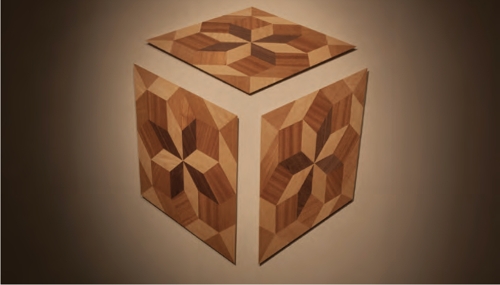
Historian David Carr argued that the nature of the collective 'we', and the way in which it is accepted or subscribed to by others, is central to the existence of a community. Experiences of what it means to be a part of the gay community within Australia are varied and greatly affected by the political climate, exclusion and stigmatisation from people external and internal to the gay community, as well as behaviours that various facets of society have accepted as the norm. Dale Harding’s first solo exhibition, Colour by Number, at !Metro Arts in Brisbane conveys a strong emphasis on his identity as a gay Indigenous man. The exhibition expresses ideas of oral history and storytelling through a provocative subversion of the domestic art of cross-stitching, in conjunction with minimalist sculptural pieces. These themes are strengthened through the segmented arrangement of Harding’s works within the gallery space. Of one’s own country (2012), which occupies an entire wall adjacent to the entrance of the exhibition, is an impassioned monument to Indigenous people who were contracted into domestic servitude. While the delicately embroidered A cock’atwo and a kangaroo (2012) and Blakboy, blakboy, the colour of your skin is your pride and joy (2012) present the viewer with humorous interpretations of homosexuality within the context of Australian Aboriginality.
It could be suggested that Harding - through publically exhibiting his works to the Brisbane community – has become a representative for the gay community, particularly gay Indigenous men. During September 2012, over 1000 people rallied in Brisbane’s Fortitude Valley and Bowen Hills for the annual Pride Parade. This year’s Pride Parade was of particular significance to the gay community, as the recently elected Liberal National Party government declared that single people and same-sex couples would be banned from having children through surrogacy.
With these recent events in mind, the themes behind Harding’s exhibition play a significant cultural role in Brisbane, and Australia as a whole. A cock’atwo and a kangaroo (2012) and Blakboy, blakboy, the colour of your skin is your pride and joy (2012), shove two pink penis-like fronds into the face of conservative political agendas. For added measure, a subtle depiction of intercourse between two men has been conveyed through intertwining two astrological symbols for ‘male’ on both works. It could be argued that Harding’s decision to implement native Australian imagery throughout these embroidered works – such as the kangaroo, cockatoo, and native bush flora – has created a distinct visual language that mirrors his own Aboriginality.
Harding’s pride in his sexual and cultural identity is clear through the affirmative phrase "I am the new Blak" stitched across Blakboy, blakboy, the colour of your skin is your pride and joy (2012). Of one’s own country (2012) also brings forth a compelling, yet subdued, exploration of themes pertaining to gender, sexuality and Aboriginality. Conversely, this minimalist sculpture is void of cheerful pastel threads and witty embellishments. Of one’s own country (2012) is a tarnished ball of fine steel wool affixed to a stark white wall. Its deliberate resemblance to a clump of pubic hair references Harding’s awareness of an oral history regarding issues faced by young Indigenous women working as domestic servants.
Dale Harding – a young man close to completing the final year of the Contemporary Australian Indigenous Art course at the Queensland College of Art – may be regarded as an accessible, positive role model for young gay Indigenous Australians. His budding career in the arts industry has presented gay Indigenous youth with a constructive model for understanding and articulating their sexual identity. As behaviours such as sexual assaults, discrimination and violence towards gay youths have become the norm within rural or remote Indigenous communities, there is a real need for affirmative public exhibitions like Colour by Number.
Colour by Number injects humour and optimism throughout its delicately embroidered threads and skilfully crafted sculptures in order to convey Harding’s interpretation of what it means to be a part of the gay community, as well as an Indigenous person with a family history affected by forced domestic servitude. Despite the prevalence of homophobia, particularly within the current political climate in Queensland, Harding’s works stand strong.












